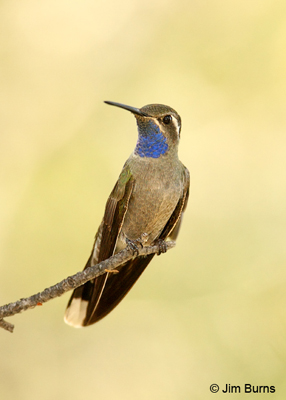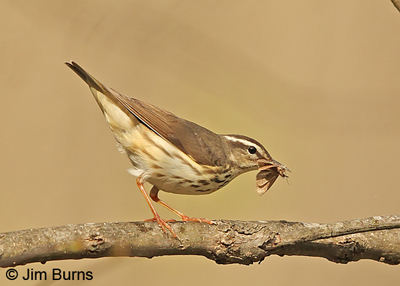
So true, but still . . . . So, I recently spent three days camping in the Chiricahuas, the ostensible purpose of the trip being to increase the size of my photo portfolio of Arizona’s largest hummingbird, late summer through early fall being prime time for hummers in Arizona, the sky islands of the southeast being the prime spot. As it happened, though, I saw several Blue-throats, all at feeders and all the feeders were in deep shade, so I still need only one finger to count the good images I have of this beautiful, conspicuous hummingbird.
I have always eschewed settling for images of hummingbirds on feeders. It’s the hand-of-man thing, and even a friend used the term “wild bird” when advising me where I might look for a Blue-throat not coming to feeders. But, here’s the thing about my trip--even though I did not see a wild Blue-throat, and despite seeing only a handful of interesting birds, my three days in the Chiricahuas were magical. My best trip in some time.
I saw Wild Turkeys and Turkey Vultures, I stumbled upon a migrating Louisiana Waterthrush, and I heard but never saw Acorn Woodpeckers. Though that was about the extent of the avian list, I saw things I had never seen before and I felt things I hadn’t experienced for many years. I recorded eight new species, non-avian of course, but more about that later. What I experienced was a much needed immersion into the serenity and wonder of a small patch of the natural world replete with a tumbling creek and all the living things that call that creek’s environs home.
It got me thinking about the newly-minted birders flocking to the outdoors in the last eighteen months. My very first “Bird Is a Verb” column, which appeared on the Environmental Page (remember when metro newspapers actually ran a page like that?) of the Arizona Republic on October 5, 2005, was titled “Pathway to Nature.” In it I tried to explain how and why birding was that pathway and the importance to the planet and its people for that pathway to become well traveled.
Too often I think those of us who define ourselves as “birders” get caught up in whatever game we might be playing and lose sight of why we began birding in the first place. For three days in the Chiricahuas, because the forest was quiet and I saw few birds, I found myself expanding the horizons of my expectations and my appreciation of the discoveries I made. I felt like a neophyte naturalist again, and it was at once exhilarating and calming.
The link between nature and mental health is centuries old, well explored and exploited by indigenous peoples across all cultures and continents, but the applications of that link are suddenly mushrooming (pun intended). Oregon voters recently legalized the use of psilocybin (an active ingredient of certain mushrooms), and a former PTSD sufferer has opened the first Psychedelic Wellness Nature Retreat in the mountains east of Portland. Birders have long been taking that kind of trip without the mushrooms or a doctor’s prescription.
Here’s a list of the lifers I found in the Chiricahuas: two butterflies, including the uncommon and uncommonly beautiful Ares Metalmark; two robber flies, including both male and female Promachus atrox, a spectacular black and white robber that looks like a little zebra; three moths; and an Alligator Lizard. Don’t ask how I’ve roamed Arizona for forty years and never before encountered an Alligator Lizard.
Special non-lifer moments occurred as well. There were clouds of sulphur butterflies around monsoon rainpools, and I saw a Red-bordered Satyr, gleaning moisture at wet sand, actually spread out its breathtaking scarlet and black wings which are seldom seen open. Spotted fawns were getting breakfast from their mother one morning, and a family of White-nosed Coatis were foraging along a trail with their young of the year.
I did see “hummingbird” moths. White-lined Sphinx Moths, the size of and often mistaken for hummingbirds, were everywhere. I photographed one drinking from the creek, and I saw several visiting sunflowers and morning glories for nectar. The monsoon has been good for the wildflowers, and there were patches of reds, purples, and golds dotting the roadsides and forest clearings.
Here’s an inventory of the things I didn’t miss on my magic trip: my personal device (I didn’t have service, but it was turned off anyway); vehicular noise (I slept without my earplugs which I always use at home); Covid concerns (I saw only three people, from afar, the whole time); deadlines and commitments (staying “in the moment” is never easier than when one escapes their routine urban milieu).
Here’s what I learned. Lifelong birders are especially vulnerable to missing out on the bounties of nature’s non-avian beauty. In retrospect I’ve come to see that I may have gotten it wrong in my first column those many years ago. Birding is not necessarily the pathway to nature. It may well be, especially for many engaging the natural world for the first time, that the reverse is true. Once a path is found and the journey begun, there may be as many forks in the trail as there are pilgrims—waterfalls, lepidoptera, autumn leaves, odonata, flowering plants, and, yes, birds and their song.
Cliché as it sounds, it’s the journey that will make you whole. There needn’t be a destination.